The Newport High School for Girls opened on 21st September 1880 on Stow Hill at an address of 3 Dorset Place. Dorset Place used to be located where the houses are across from the Red Lion and was part of Stow Hill as a whole. The street directory of 1897 has an entry for 'Dorset Place, 68, Town-Smith, Miss, Newport High School for Girls' which is the middle property in the photo below.
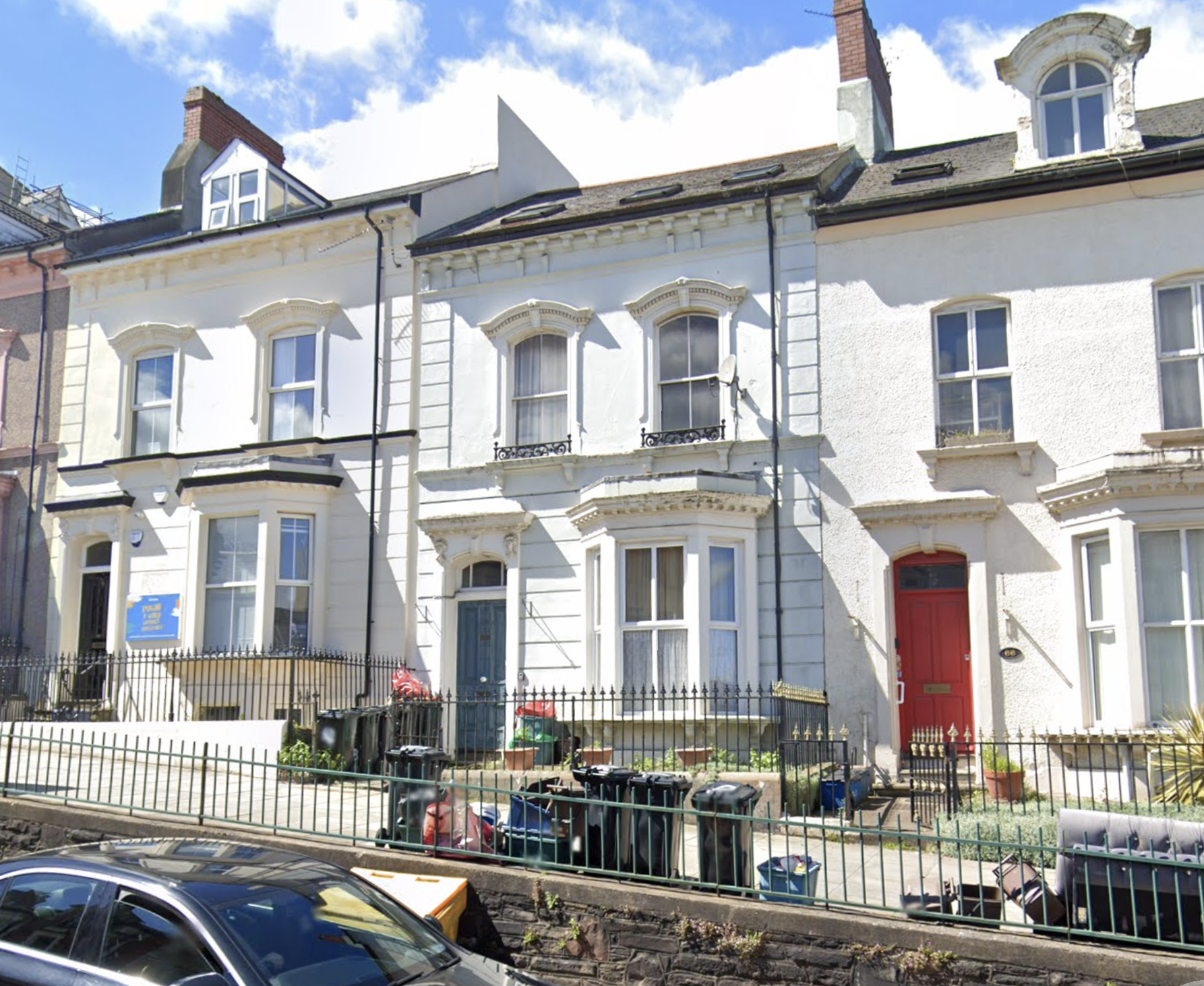
An advert for 1 Dorset Place in 1862 gives an indication of the size of the property the school was housed in.


Opening of the School

Ahead of the opening, The Monmouthshire Merlin published details of the 'referees' (supporters?) along with a list of the subjects being tought and the names of the lecturers.
The referees featured very well known Newport citizens such Lord and Lady Tredegar, Samual Homfray, Crawshay Bailey, T. Cordes along with some people from Paris, Saxony and Bohemia.
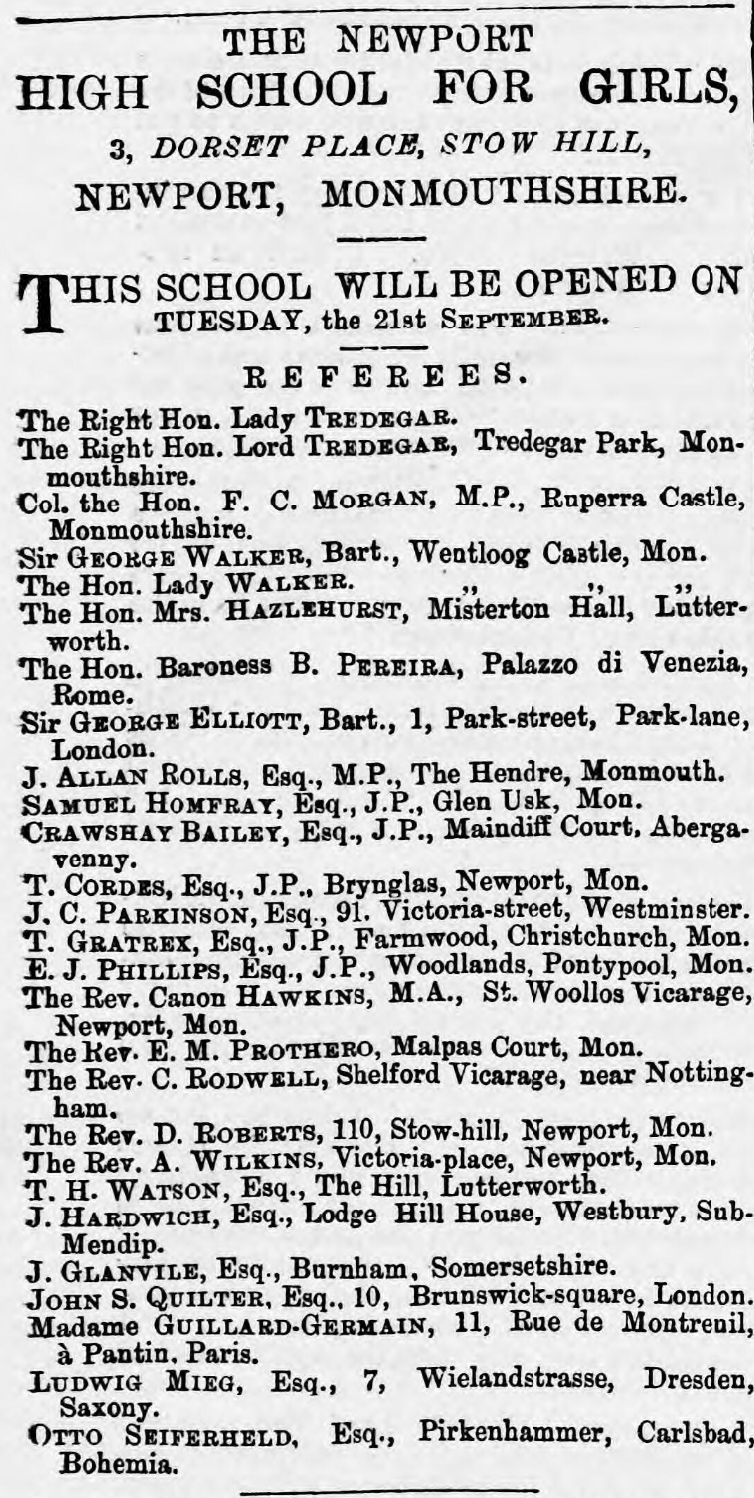
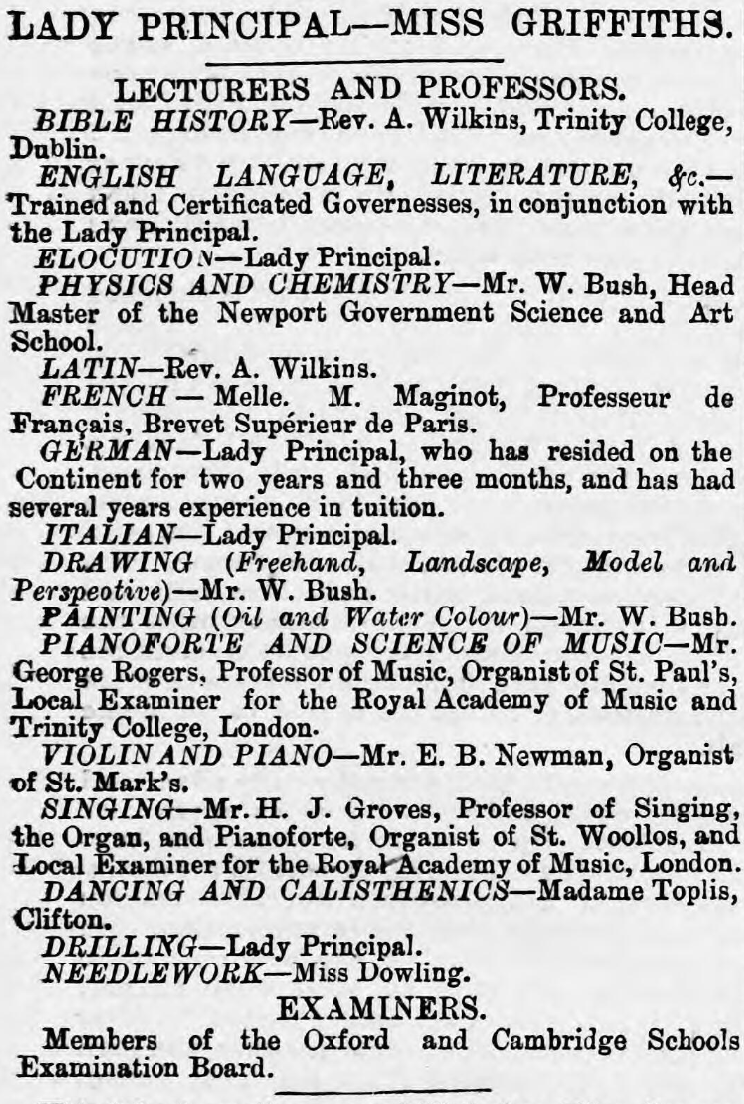
The article went onto describe the qualities of the new school.
This School supplies a sound High-class Education, on reasonable terms. The School system is specially adapted to meet and correct the defects pointed out in the Report of the Schools Inquiry Commission:—Want of thoroughness and foundation want of system slovenliness and showy superficiality; inattention to rudiments undue time given to accomplishments—and these not taught intelligently or in any scientific manner; want of organisation.
All subjects are taught intelligently, and in a scientific manner, by Professors of high repute, and Certificated English and Foreign Governesses.
Great endeavours are made to train the Pupils for the practical duties of life, and to fit them for their future career. Pupils are thoroughly prepared for the Oxford and Cambridge Local Examinations.
Applications for Admission should be sent as early as possible to the Lady Principal, of whom also Prospectuses giving full particulars of terms, regulations, &c., may be obtained.

First Annual Report
Just over a year after opening, an Annual Report was published in 1881 by a 'Loftus T. Monro, M.A., Catab., Late Scholar of Queen's College, and one of Her Majesty's Inspectors of Schools'.
Interestingly it lists every pupil, attendances and absences and examination marks. An 1880 amendment to The Elementary Education Act 1870 added a mandatory attendance provision but exempted children who had reached Standard IV (about age ten) as well as older children who worked.
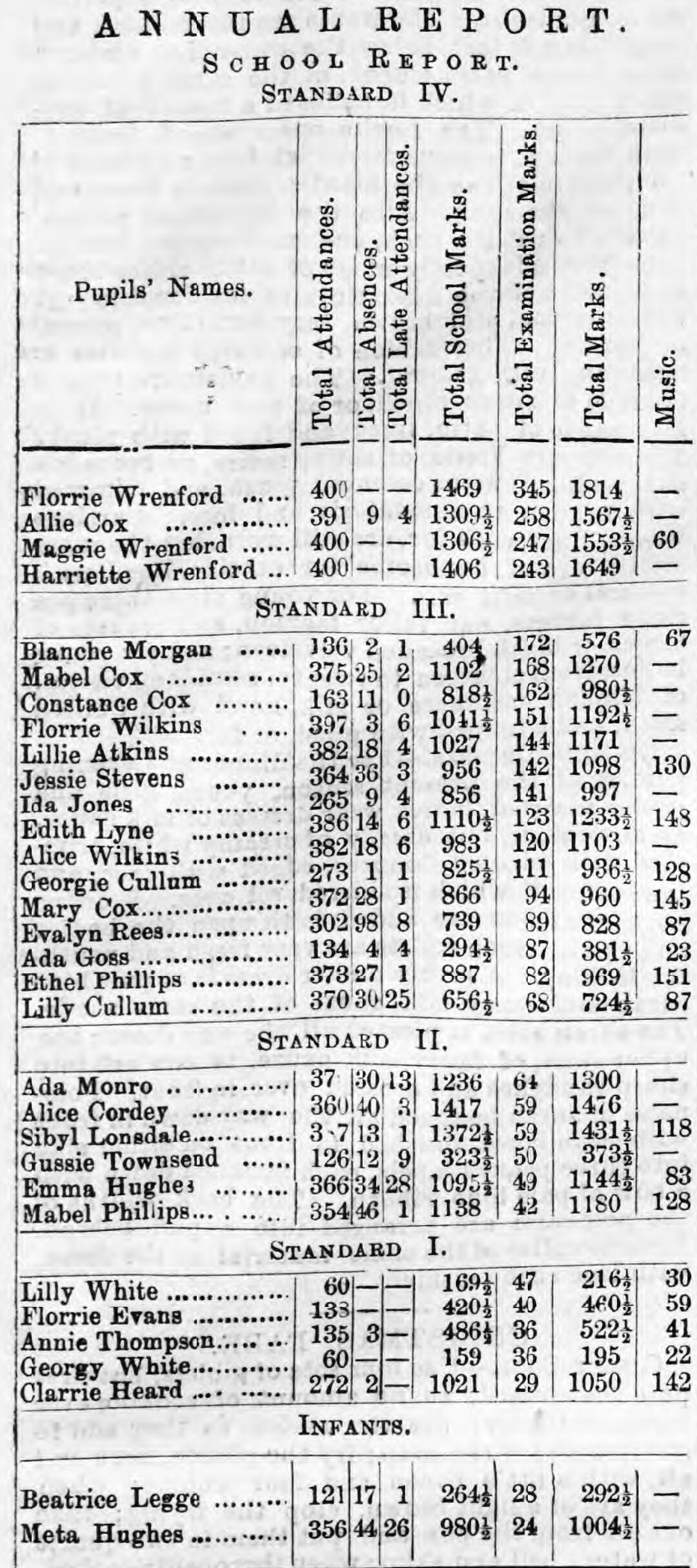
Three pupils achieved what appears to be a perfect record of 400 attendances with no absences or late attendances. They all shared the surname Wrenford and their father was the Rev. J. Tinson Wrenford, Vicar of St. Paul's which was not far from the school.

Also published were the full results of each examinations that the girls took. Florence, who was possibly the youngest of the three Wrenford sisters scored the highest marks in the school excelling in English.


Examiner's Report
Published at Christmas, the report covers a number of aspects including the building, the organisation and discipline and the methods of instruction. The full report is below.
Buildings, Appliances, etc.
I closely inspected the various buildings and class-rooms in respect of their adaptability for efficiently conducting the necessary work of a School and found everything in a highly satisfactory state, and not only thoroughly suited to the purpose, but also far in advance, in many respects, of what is usually found in similar institutions. I must especially note the superior construction of the Desks, Apparatus, and Fittings, embracing, as the latter do, the most modern improvements.
Organisation, Discipline, Tone, etc.
One of the points on which it affords me great pleasure to report is the high tone which exists, and the excellent understanding that obtains between the teacher and the taught. In confirmation of this I may mention the scrupulous neatness exercised by the pupils in the care of their desks and in the execution of their exercises, as well as their faultless conduct and honour during the examination.
Methods of Instruction
The methods of instruction upon which I have had the opportunity of forming an opinion seem to be based upon the most approved modern and philosophic systems, and are undoubtedly suited to the different ages of the pupils, to the development of the mind, to thorough grounding in the important elementary subjects, and not to a system of cramming, or to the establishment of a superficial smattering of showy accomplishments. It is necessary to observe that due importance is given to the study of Needlework and Domestic Economy, the latter of which includes Elementary Sanitary Science, and that there are opportunities of giving practical effect to this study.
Subjects Examined
The following are the subjects of instruction, with general results and remarks:-
Bible Knowledge
Here the best in Standard IV and III combined, are Mabel Cox, F. Wrenford, and J. Stevens, while in the lower standards Alice Cordey and Ada Monro stood bracketed first. The work of the first half of the pupils shews that the instruction has been thorough in this subject.
Latin
This is, as is well known a comparatively strange subject to Girls' Schools. The results, as might be expected, are not particularly advanced. Declensions of Nouns and Adjectives need attention. The best in Standard IV is F. Wrenford. In Standard III, F. Wilkins and Constance Cox are easily first.
French
As in the case of Latin, a little more practice in answering questions on paper, more frequent tests of work taught in the term, and the employment of elementary manuals would be advantageous Blanche Morgan and H. Wrenford are 1st and 2nd in the highest division, and in the next division, Constance and Mabel Cox; while in the lower stages Sibyl Lonsdale and Lily White stand at the head.
Arithmetic
This subject has been very carefully taught, and the Exercises were neatly performed. The latter of the two problems in the Fourth Standard was somewhat difficult, but some attempts might have been forthcoming. H. Wrenford and F. Wrenford are first. In the Third Standard, Blanche Morgan is facile princeps, six acquitting themselves well. The questions for Standard II were of necessity below the pupils placed in this class. The First Standard and one of the infants passed well.
English
I have nothing bnt unqualified praise for the History, Geography, Grammar, Domestic Economy, and especially for the Writing throughout. The Reading and Repetition of Standards II and I deserve commendation, and is very satisfactory in Standard IV F. Wrenford distinguished herself in all these subjects, particularly in Geography. In Standard III Mabel Cox and J. Stevens stand first; and Ada Monro and Alice Cordey in Standard II.
Harmony
Considerable efficiency was displayed in this subject. Florence Wrenford stands out well, with Allie Cox close behind.
General Inspection of Needlework, Drawing, Exercise Books
In addition to the above subjects, I inspected the Needlework. The samples exhibited gave evidence of snnd instruction on the part of the teacher, and care on that of the pupils. I understand that in future knitting on the German method, will be added to the curriculum.
I am glad to be able to bear testimony to the thoroughness of the teaching in Drawing, as shown by the specimens exhibited in the pupils' books.. I cannot conclude without expressing my deep conviction that the work done, both by the Teachers and professors, reflects great credit upon them, and considering the short time the school has been open, the attainments, taken altogether, are decidedly in a sound state.
Parents ought to be glad of the opportunity of such Education being placed within their reach.

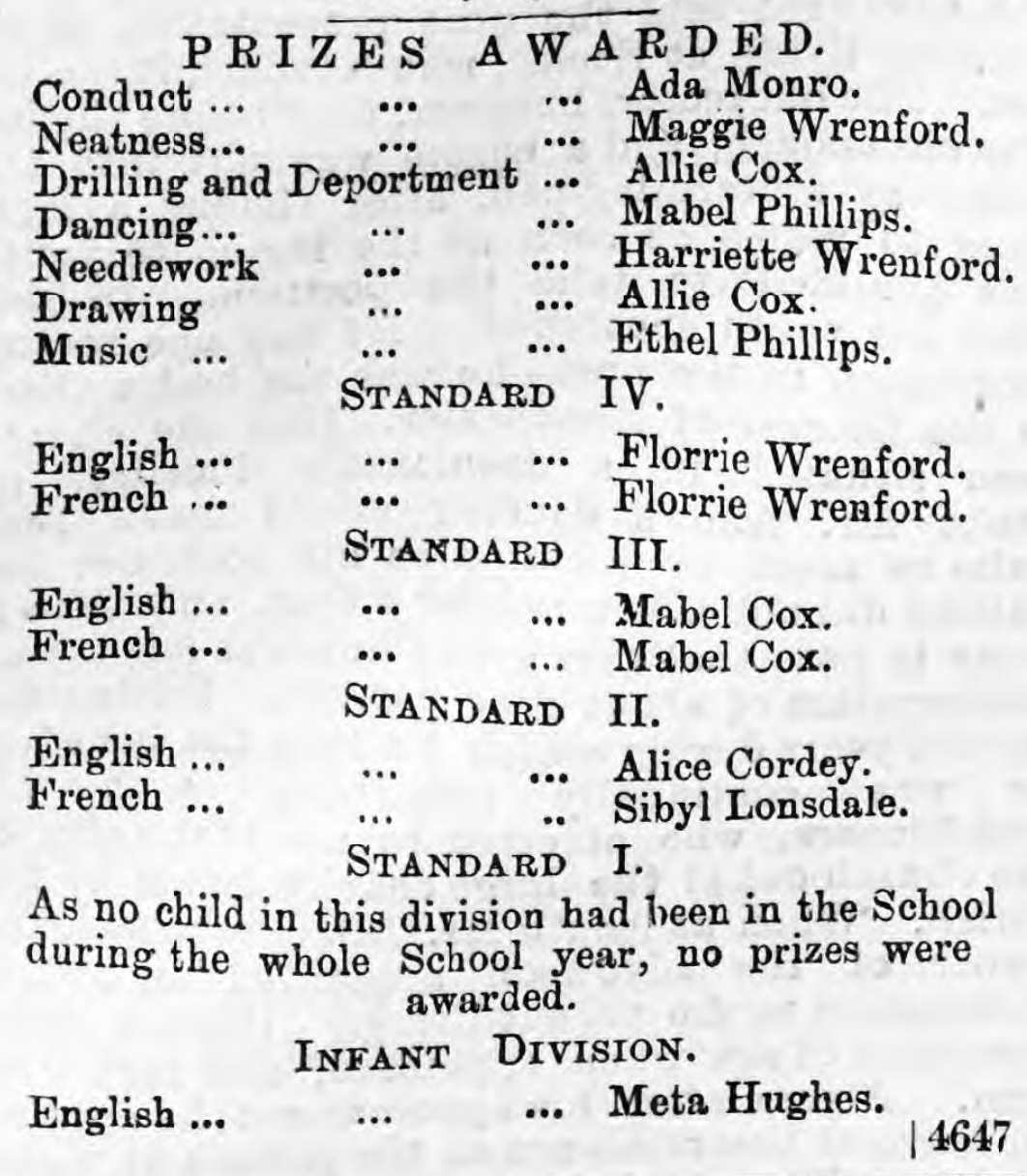

Second Annual Report
In 1882 the Second Annual Report was published in the Monmouthshire Merlin and featured many of the same girls and the Wrenford's slacked a bit with all three girls having a few days absent, but no lateness.
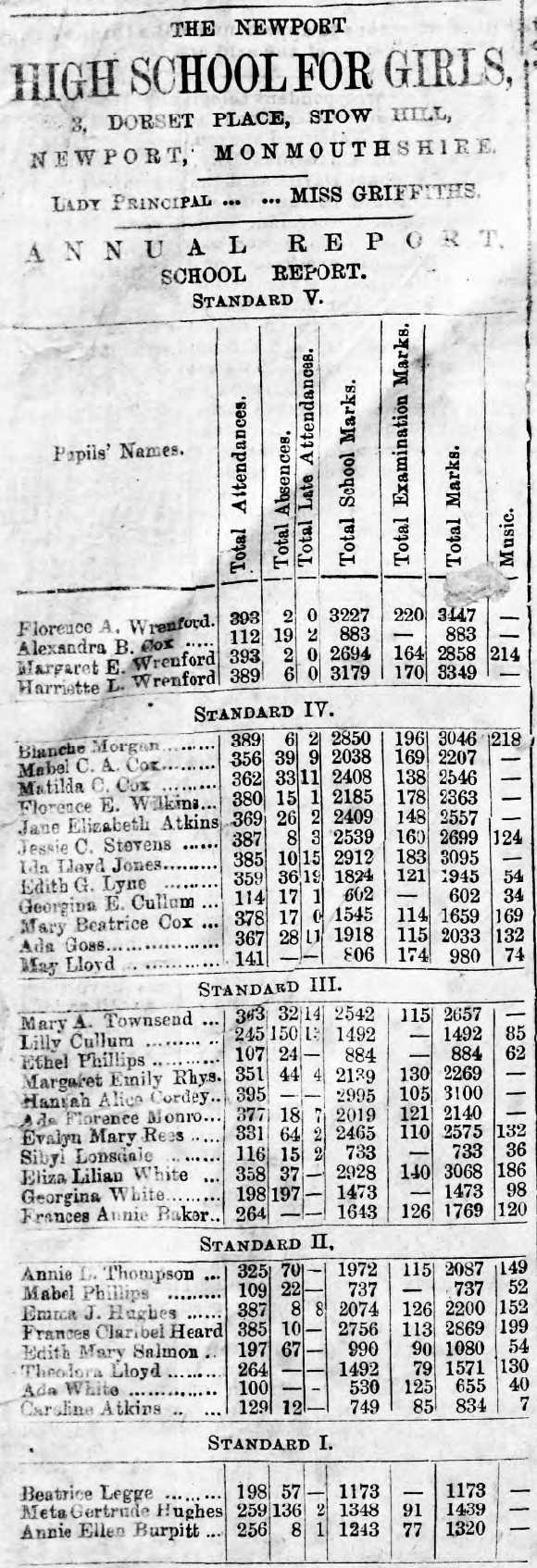

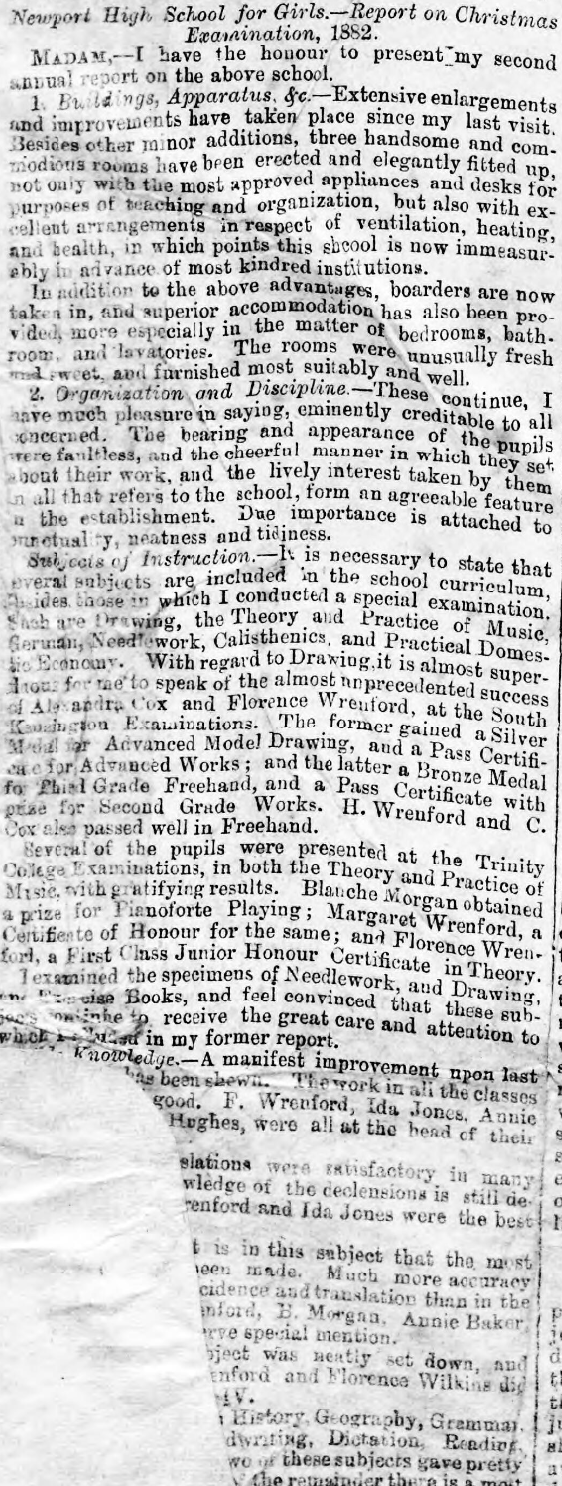
It didn't appear that the reports were published beyond the second year and the Monmouthshire Merlin ceased to be published in 1884.
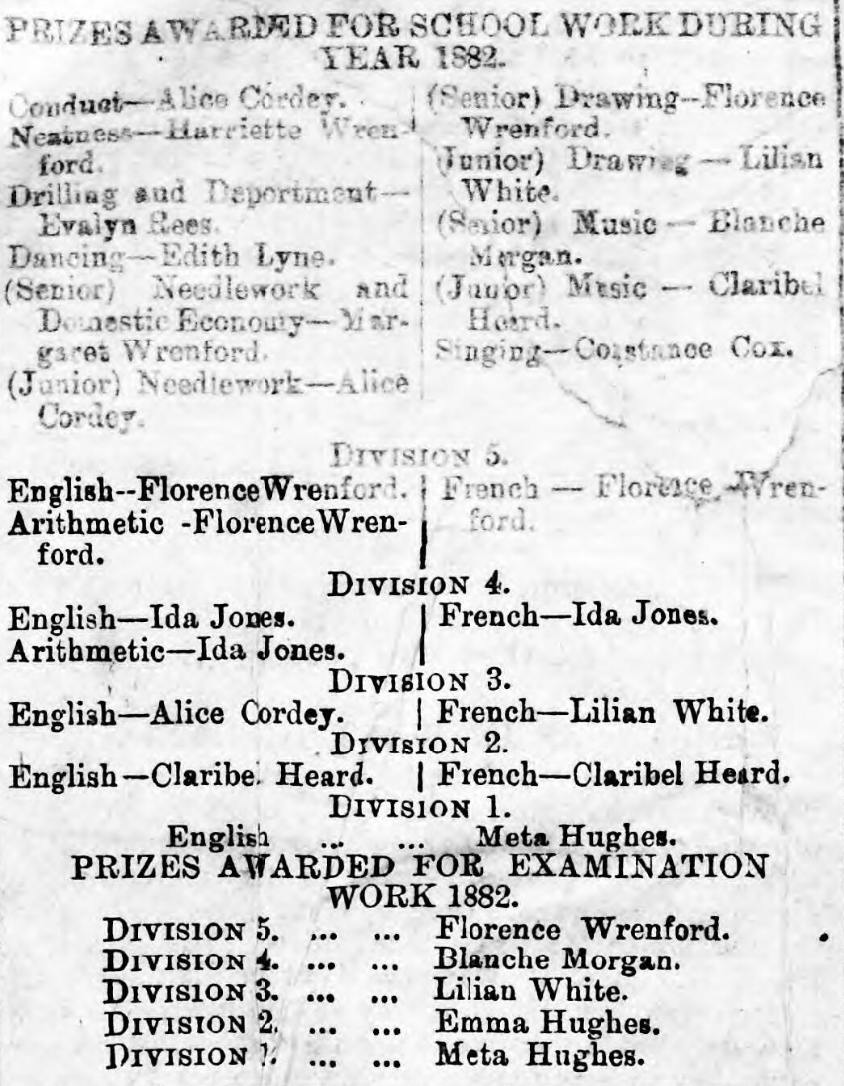

About the Pupils
As already mentioned, the three Wrenford pupils were the daughters of the well-known at the time Rev. J. Tinson Wrenford, Vicar of St. Paul's but can we find out any information about the other pupils.
For the most part, if relying on newspaper articles, no, but there is some information out there.
Alice Cordey
An article in the Monmouthshire Merlin in August 1883 about the new Wesleyan Chapel which opened on Stow Hill. A Miss Alice Cordey was mentioned as placing a memorial stone and a trustee who was present was Thomas Cordey which could be her father. If it was that Thomas Cordey he was a grocer who had shops on High Street and in Maindee and Abersychan.
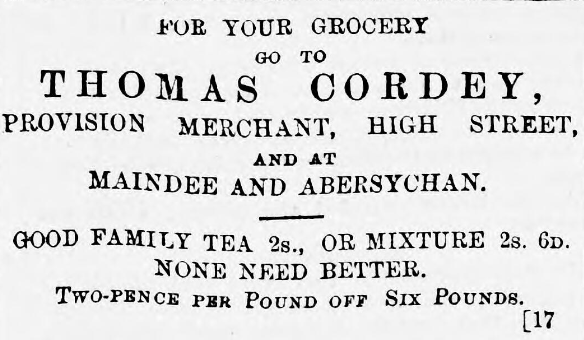
There are frequent references to him in police reports with people stealing from his shop, including his own employees.
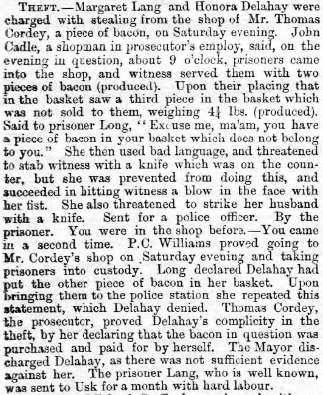
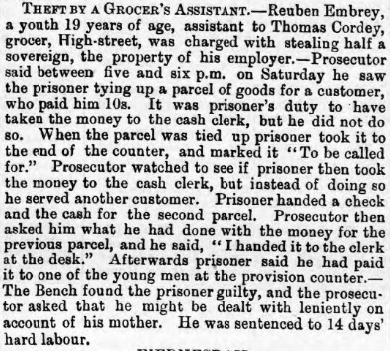
Monmoutshire Merlin, 20th July, 1870 and 12th August, 1881
He was also a supplier of groceries to the Newport Union Workhouse.

Ethel and Mabel Phillips
A wedding took place in September 1882 at St Woollos where a Miss Amy Phillips, the eldest daughter of the brewer Thomas Phillips of Palmyra House was married. Bridesmaids in attendance included Miss Ethel Phillips and Miss Mabel Phillips. It's very likely that these two girls were related to Thomas Phillips and most likely his daughters.
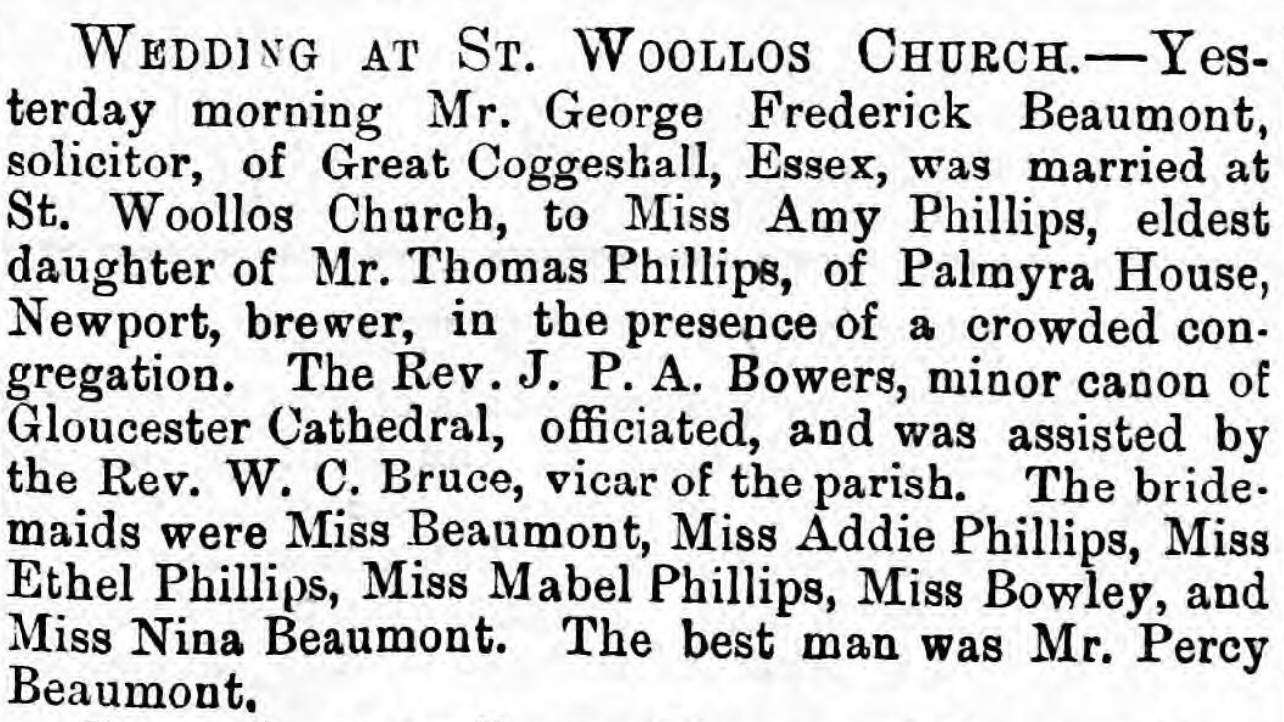
According to Brewery History, the Phillips brewery was founded in 1874 when Thomas Phillips, previously of the Northampton Brewery Co. Ltd, bought the Dock Road brewery of Thomas Floyde Lewis with 13 tied houses. The brewery was bought by the Simonds Brewery in 1954 and then went into liquidation.

Ida Jones
There is just a single mention of someone called Ida Jones who in March 1884 participated in the 'pianoforte solo "Martha" with much ability' at a performance held by the Bassalleg Amateur Dramatic Society. Interestingly, a Mr R.C. Cullum performed that night and I wonder if he was related to Georgie Cullum who was in the same class as Ida.
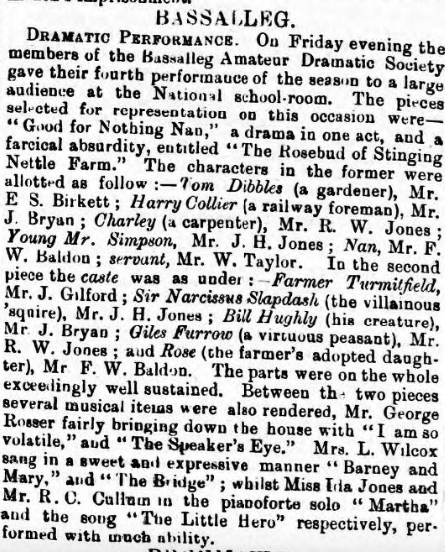
Blanche Morgan, Maggie Wrenford, Ida Jones and Jessie Stevens
A reference to Blanche Morgan appeared in July 1882 when she participated in a Trinity College, London Examination in Music getting a pass in the Junior Section. Jessie Stevens also got a pass and and interestingly, Maggie Wrenford (as Margaret E.D. Wrenford) was disqualified from getting an honours due to being over age.
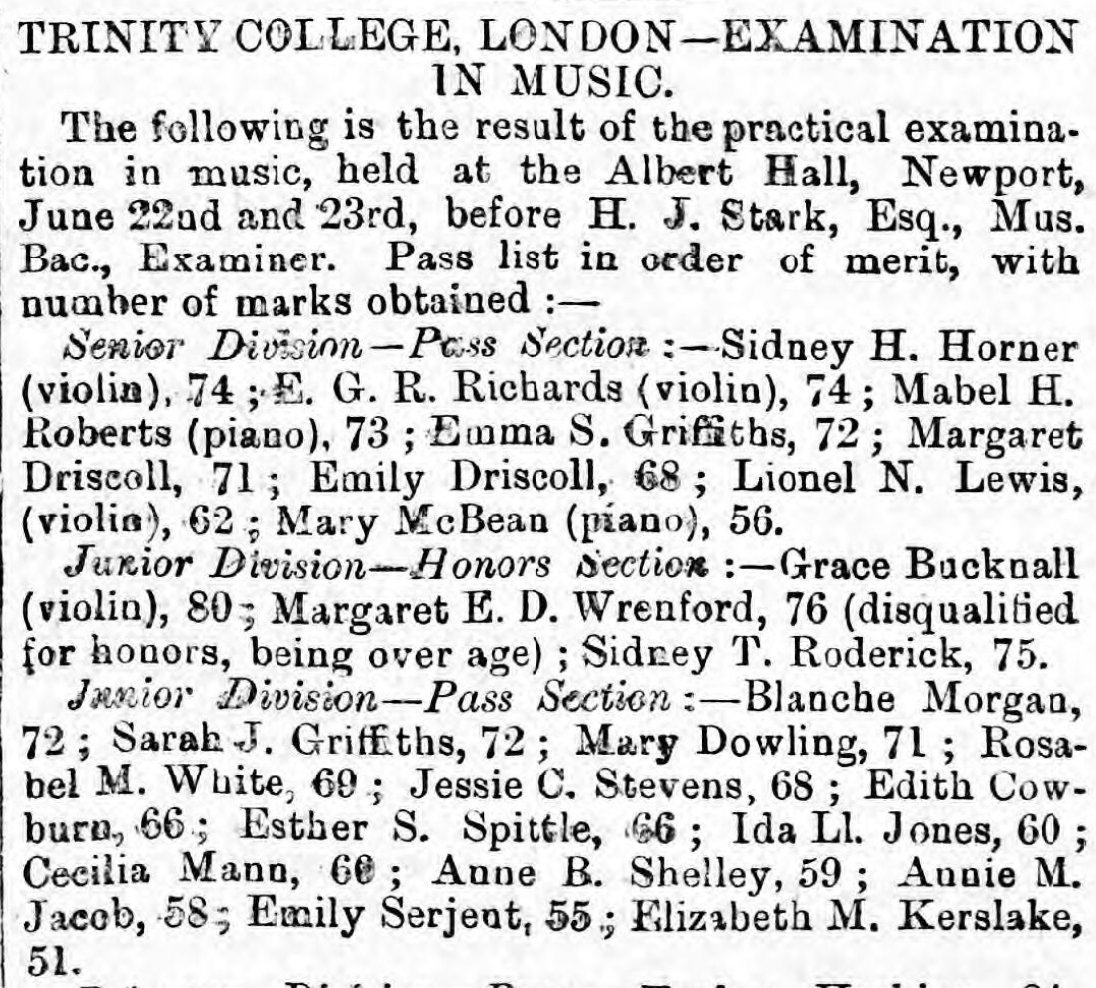


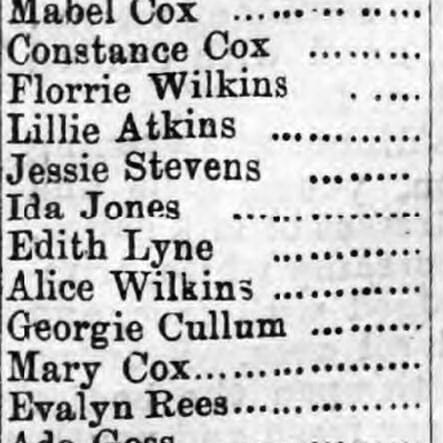
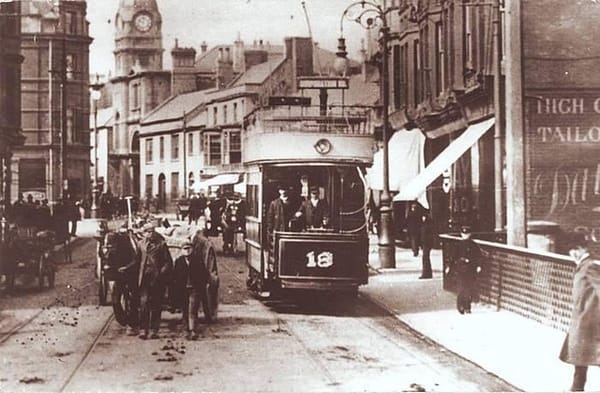
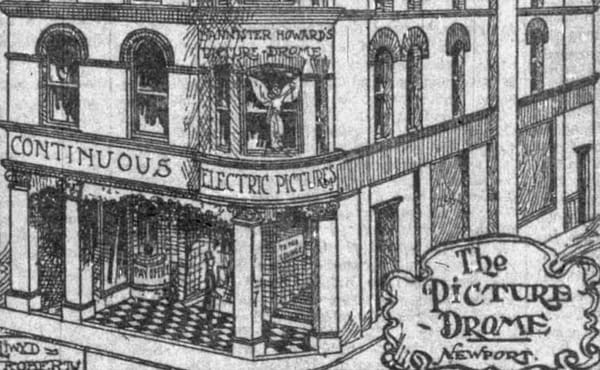
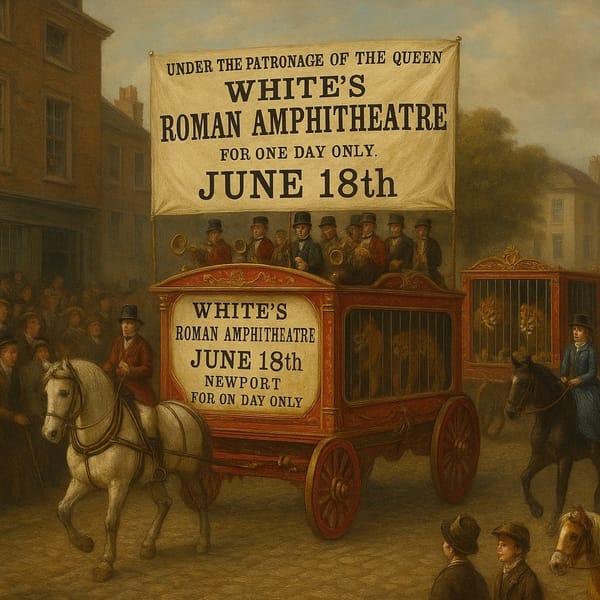

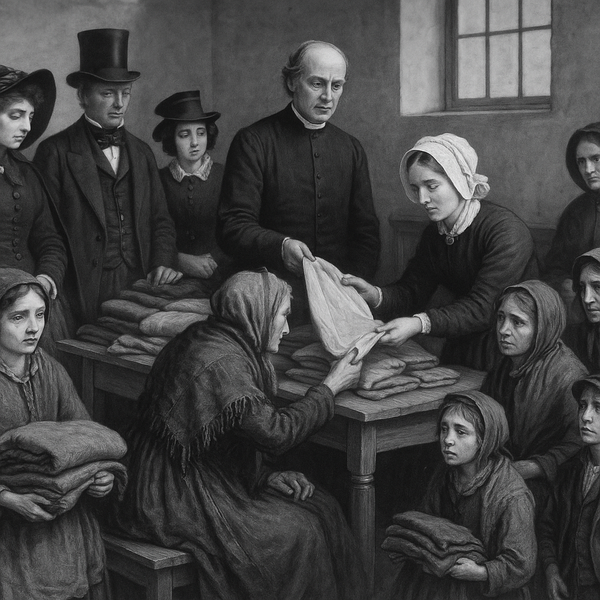
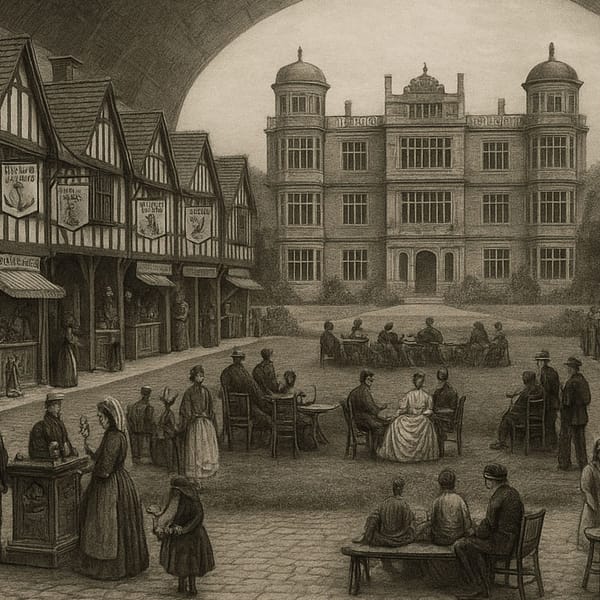
Member discussion